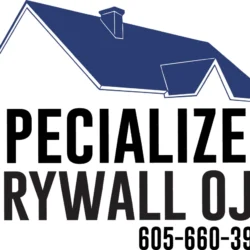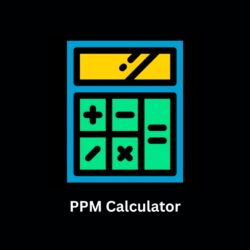Introduction
For many farmers across rural India and other agricultural economies, a tractor is more than just a vehicle—it’s a vital livelihood tool. Unfortunately, financial hardships, unpaid EMIs, or loan defaults can sometimes lead to the unpleasant situation of seizing a tractor. This process, though legally sanctioned, often creates tension between lending institutions and farmers. Understanding the laws, procedures, and rights associated with tractor seizure can help individuals navigate this complex issue more confidently.
In this article, we’ll explore what “seizing tractor” really means, why it happens, the legal framework governing it, how farmers can protect their rights, and ways to avoid seizure through financial planning and awareness.
What Does “Seizing Tractor” Mean?
The term “seizing tractor” refers to the process by which a bank, finance company, or non-banking financial institution (NBFC) takes back possession of a tractor that was purchased on loan, due to non-payment of dues. When a farmer defaults on monthly payments for a prolonged period, the lender—after following proper legal procedures—has the right to repossess the tractor.
This process is generally governed by loan agreements, the Securitization and Reconstruction of Financial Assets and Enforcement of Security Interest (SARFAESI) Act, 2002, and the Reserve Bank of India (RBI) guidelines. However, seizure should always follow due process, ensuring fairness and transparency.
Why Does Tractor Seizure Happen?
There are several reasons why a seizing tractor situation arises:
- Loan Default: The most common reason is missed or delayed EMI payments over a specified period.
- Violation of Agreement Terms: Using the tractor for non-agricultural or commercial purposes may sometimes violate the loan terms.
- Financial Hardship: Crop failures, unpredictable weather, or market fluctuations can make repayment difficult for farmers.
- High-Interest Burden: Loans with high interest rates from private financiers can quickly become unmanageable, leading to default and seizure.
Understanding these reasons is crucial for both borrowers and lenders, as it allows room for negotiation or restructuring before things escalate.
The Legal Process of Seizing a Tractor
A lender cannot simply show up and take a tractor without following a lawful process. The procedure for seizing tractor involves several stages:
- Issuing a Default Notice:
The lender must send a written notice to the borrower, clearly stating the outstanding dues and a grace period to clear them. - Opportunity to Settle:
Borrowers usually get 60 days under the SARFAESI Act to repay or settle their dues before seizure action begins. - Repossession:
If payment isn’t made within the notice period, the lender can initiate seizure. Repossession should be peaceful and preferably in the presence of witnesses. Using force or intimidation is illegal. - Post-Seizure Procedure:
After seizing the tractor, the lender must inform the borrower in writing, providing details of the seizure and the next steps—whether it will be auctioned or sold to recover dues. - Right to Reclaim:
Borrowers still have the right to repay the dues and reclaim their tractor before it is sold.
Borrower’s Rights During Tractor Seizure
Many farmers are unaware of their legal rights during tractor seizure, which often leads to exploitation. Here are key rights every borrower must know:
- Right to Proper Notice: The lender must issue a written notice before taking possession.
- Right to Fair Treatment: The seizure must be done peacefully without harassment or humiliation.
- Right to Information: The borrower has the right to know the outstanding amount and obtain all relevant loan documents.
- Right to Redemption: Even after seizure, the borrower can pay the dues and reclaim ownership before the sale.
- Right to Legal Remedy: If the seizure was unlawful, the borrower can approach consumer courts or banking ombudsman authorities for relief.
Being informed about these rights can prevent misuse of power and ensure fairness in the entire process.
Impact of Tractor Seizure on Farmers
When a tractor is seized, the farmer not only loses a valuable asset but also their primary source of income. This leads to a chain reaction of financial and emotional stress:
- Loss of Livelihood: Without a tractor, farmers struggle to plow fields or rent out services.
- Debt Trap: Some borrow further to recover their tractor, worsening financial instability.
- Mental Stress: Repossession can lead to distress, embarrassment, and loss of social standing.
The psychological impact of seizing tractor is often underestimated, highlighting the need for humane recovery practices and awareness campaigns.
How to Avoid Tractor Seizure
Preventing seizure starts with proactive financial management and awareness. Here are some practical tips:
- Timely EMI Payments: Always prioritize loan installments. Even small delays can accumulate penalties.
- Communicate with Lenders: If facing financial difficulty, inform the lender early. Many institutions offer restructuring or moratorium options.
- Choose the Right Loan Plan: Compare interest rates, tenure, and hidden charges before signing.
- Keep Records: Maintain copies of loan agreements, receipts, and communication.
- Explore Government Subsidies: Many state and central schemes support farmers in buying tractors with reduced interest.
- Avoid Private Financiers: Whenever possible, choose government or bank loans that are more transparent and regulated.
By following these steps, farmers can significantly reduce the risk of tractor seizure and maintain long-term financial stability.
What to Do After a Tractor Is Seized
If your tractor has already been seized, don’t panic. You still have options:
- Contact the Lender: Ask for the exact outstanding amount and payment timeline to reclaim the tractor.
- Negotiate a Settlement: Sometimes, lenders accept partial payments or revised EMIs.
- Seek Legal Advice: Approach a local advocate familiar with banking laws for guidance.
- File a Complaint: If the seizure was unlawful or forceful, you can file a complaint with police, the consumer court, or RBI Ombudsman.
Taking timely action can make a big difference in recovering your asset.
Conclusion
The process of seizing tractor is often a last resort for lenders and a painful experience for farmers. However, with the right knowledge, communication, and financial planning, seizure can be avoided or managed effectively. Farmers must stay informed about their rights, maintain transparency with lenders, and seek government assistance when needed.
Ultimately, tractors symbolize empowerment and progress in agriculture. By ensuring fair lending practices and responsible borrowing, both farmers and financiers can work together toward a more secure and sustainable farming economy.




